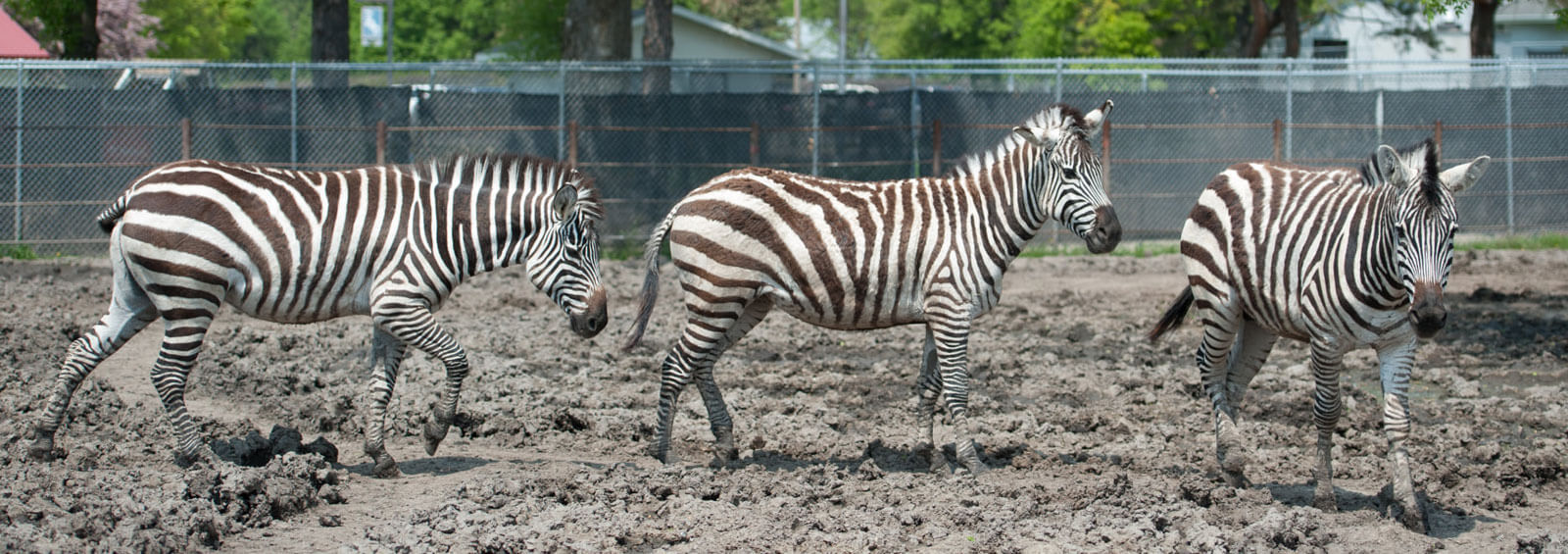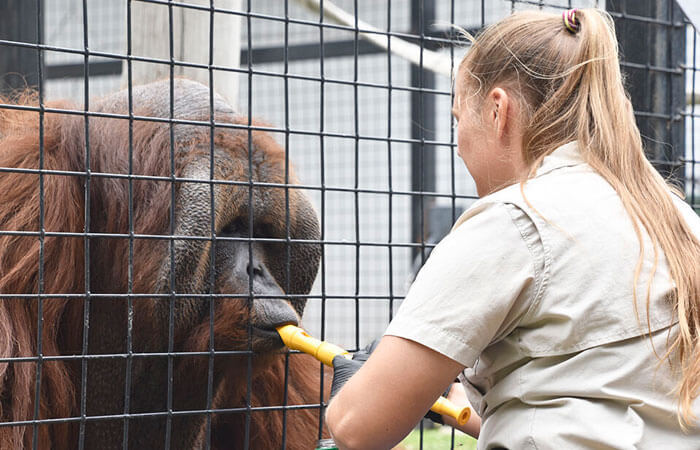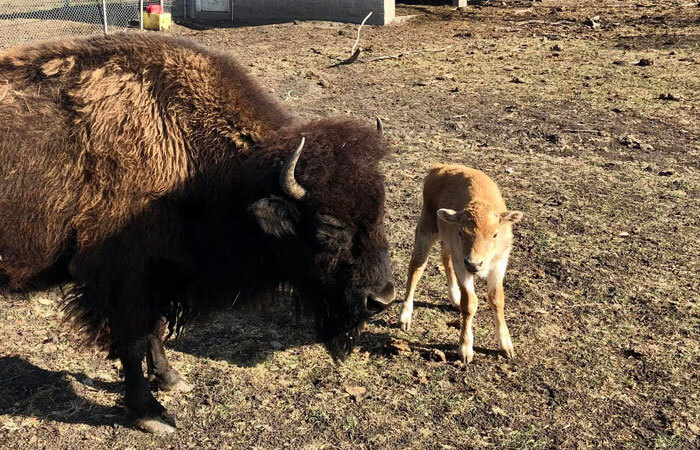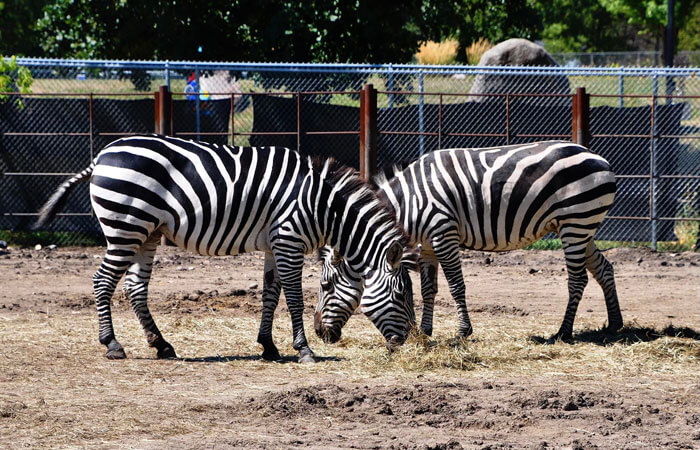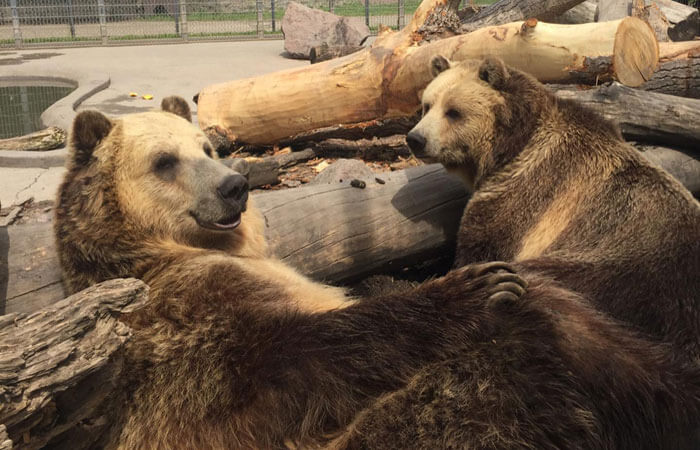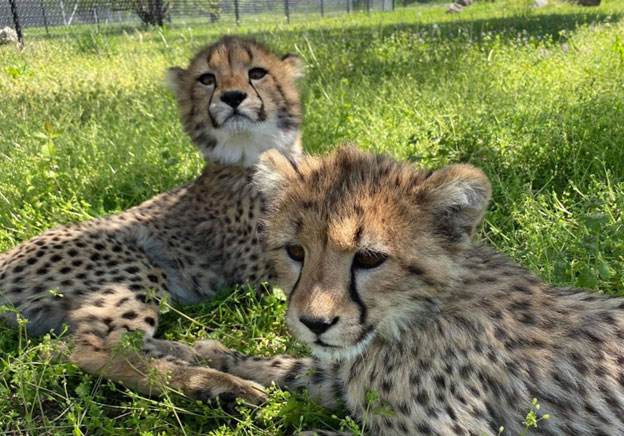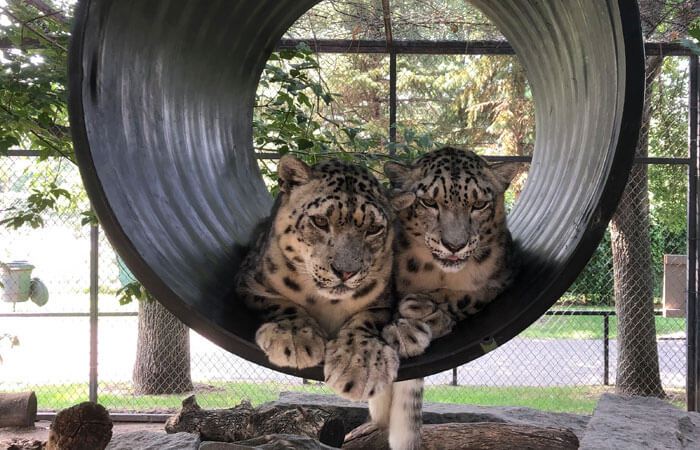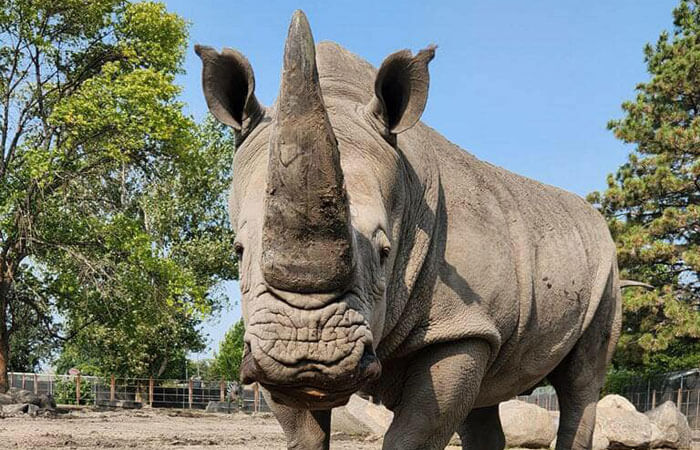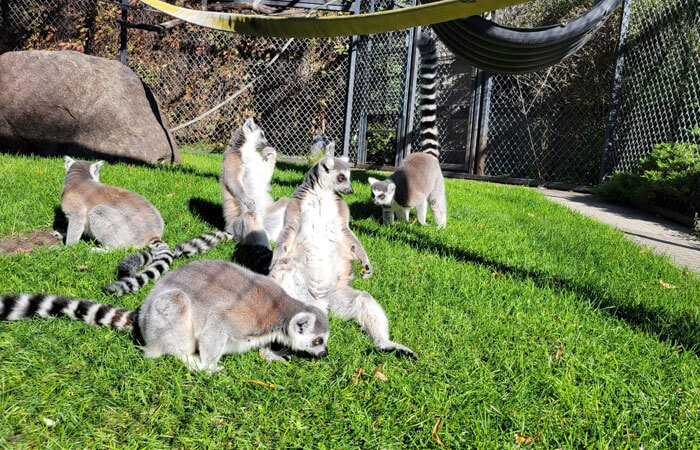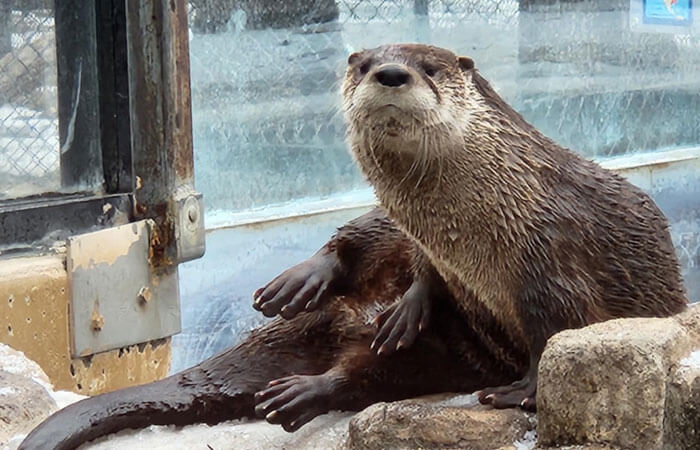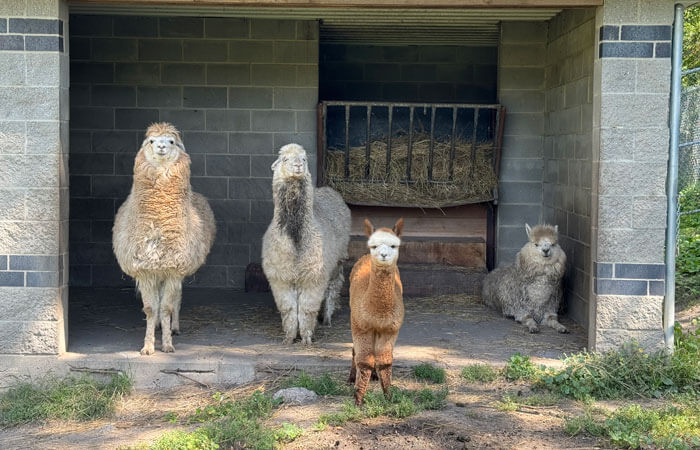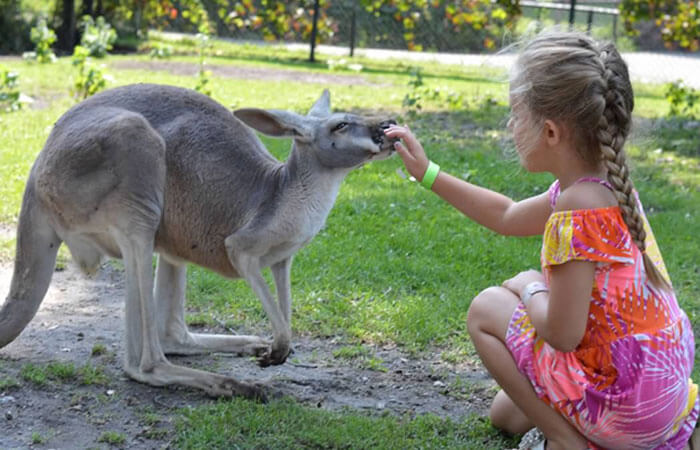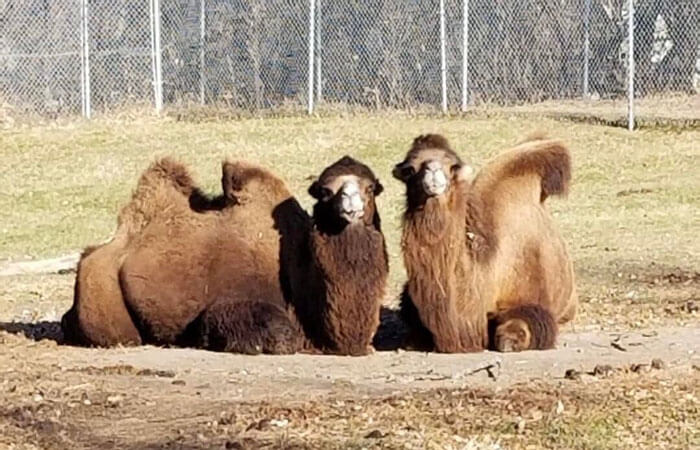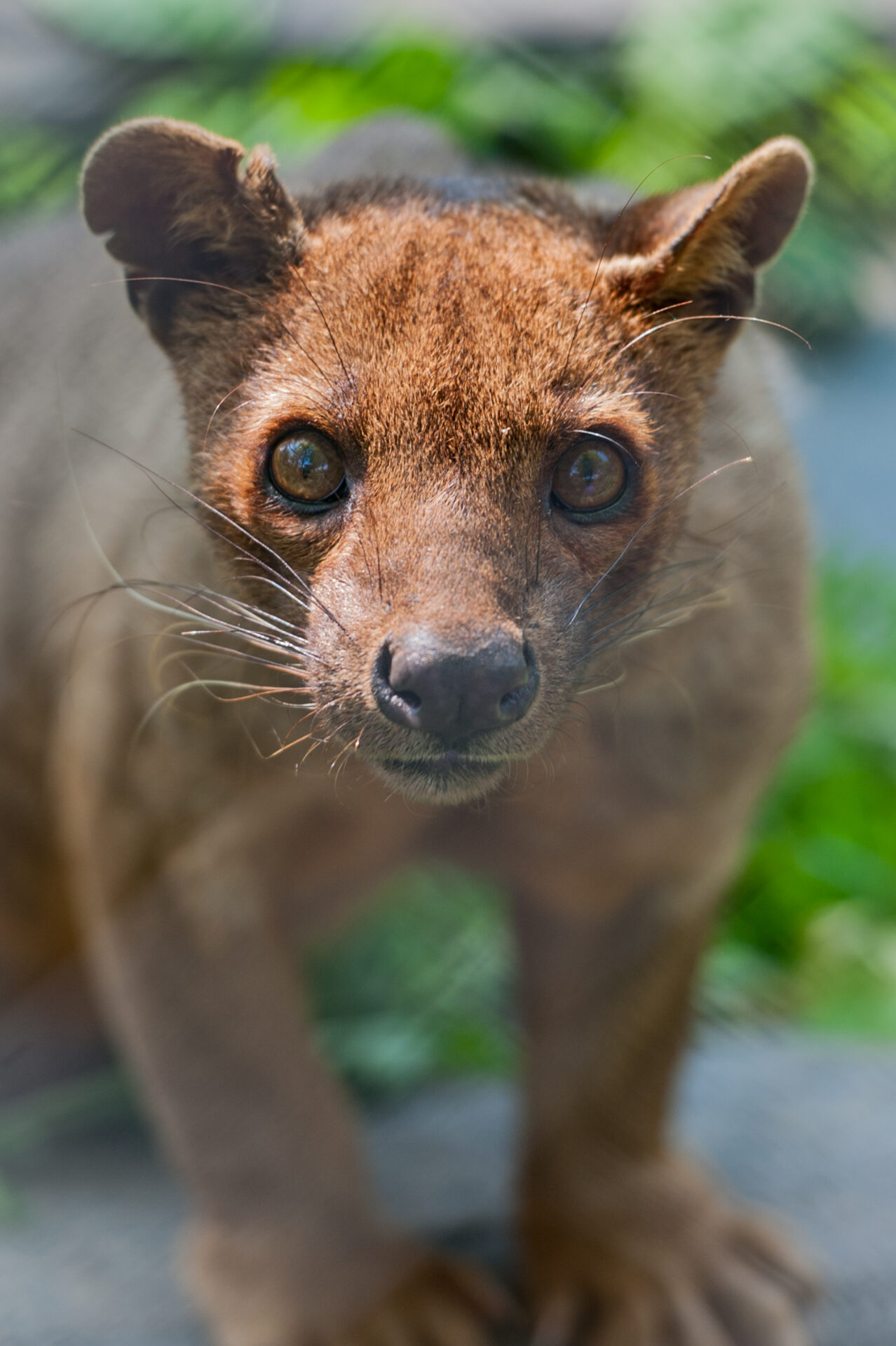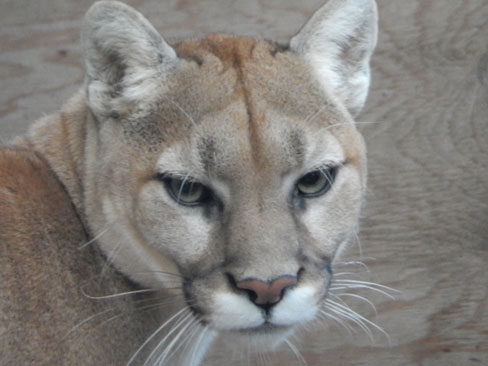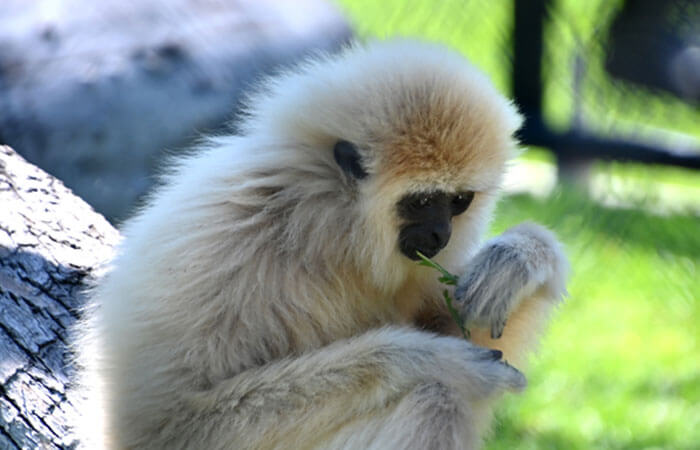Bengal tigers are native to Bangladesh, Bhutan, China, India, Myanmar, Nepal. Their habitat is made up of deciduous forest, temperate forests, and grasslands. In the wild tigers’ prey includes buffalo, deer, wild pigs, and other large mammals. They typically do not hunt daily and not every quest is victorious. A tiger may attempt ten prey before achieving success.
Status: There are fewer than 2,000 Bengal Tigers left in the wild due to habitat loss and poaching! Zoos need to take an active role in breeding responsibly, to help the plight of this amazing species.
Meet Zaida and Felix, Chahinkapa Zoo’s Bengal tigers. Zaida is the rarer white Bengal tiger. She is 3 years old. Zaida loves the attention from our staff, and they never disappoint. Her mate, Felix, is a handsome 2-year-old whose coat of brilliant orange and black shows the beauty of this magnificent species.
They are good friends demonstrated by their “chuffing” (gentle growls) during daily behaviors. Their enrichment includes scent trails, Jolly Balls, water play, drawing a crowd of visitors when they hear the loud vocalizations.
See these two and many more animals when you visit Chahinkapa Zoo this summer!
Native Location
South Asia

